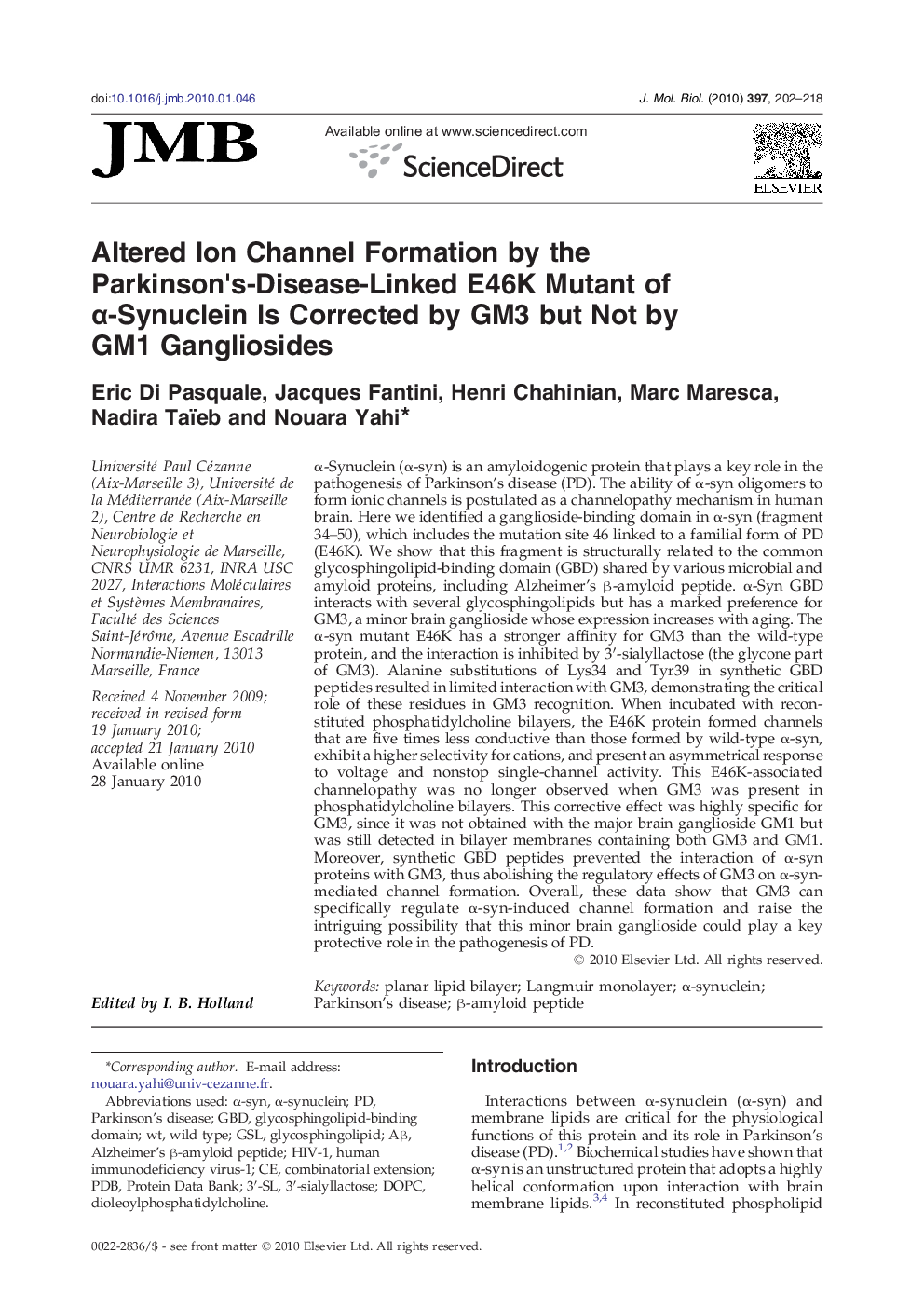| کد مقاله | کد نشریه | سال انتشار | مقاله انگلیسی | نسخه تمام متن |
|---|---|---|---|---|
| 2185976 | 1096027 | 2010 | 17 صفحه PDF | دانلود رایگان |

α-Synuclein (α-syn) is an amyloidogenic protein that plays a key role in the pathogenesis of Parkinson's disease (PD). The ability of α-syn oligomers to form ionic channels is postulated as a channelopathy mechanism in human brain. Here we identified a ganglioside-binding domain in α-syn (fragment 34–50), which includes the mutation site 46 linked to a familial form of PD (E46K). We show that this fragment is structurally related to the common glycosphingolipid-binding domain (GBD) shared by various microbial and amyloid proteins, including Alzheimer's β-amyloid peptide. α-Syn GBD interacts with several glycosphingolipids but has a marked preference for GM3, a minor brain ganglioside whose expression increases with aging. The α-syn mutant E46K has a stronger affinity for GM3 than the wild-type protein, and the interaction is inhibited by 3′-sialyllactose (the glycone part of GM3). Alanine substitutions of Lys34 and Tyr39 in synthetic GBD peptides resulted in limited interaction with GM3, demonstrating the critical role of these residues in GM3 recognition. When incubated with reconstituted phosphatidylcholine bilayers, the E46K protein formed channels that are five times less conductive than those formed by wild-type α-syn, exhibit a higher selectivity for cations, and present an asymmetrical response to voltage and nonstop single-channel activity. This E46K-associated channelopathy was no longer observed when GM3 was present in phosphatidylcholine bilayers. This corrective effect was highly specific for GM3, since it was not obtained with the major brain ganglioside GM1 but was still detected in bilayer membranes containing both GM3 and GM1. Moreover, synthetic GBD peptides prevented the interaction of α-syn proteins with GM3, thus abolishing the regulatory effects of GM3 on α-syn-mediated channel formation. Overall, these data show that GM3 can specifically regulate α-syn-induced channel formation and raise the intriguing possibility that this minor brain ganglioside could play a key protective role in the pathogenesis of PD.
Journal: Journal of Molecular Biology - Volume 397, Issue 1, 19 March 2010, Pages 202–218